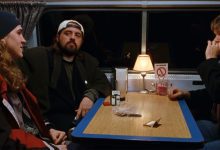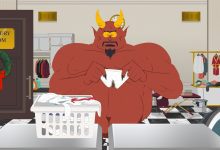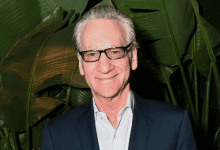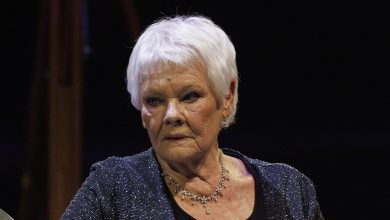How Apple’s ‘The Studio’ Won Over Hollywood
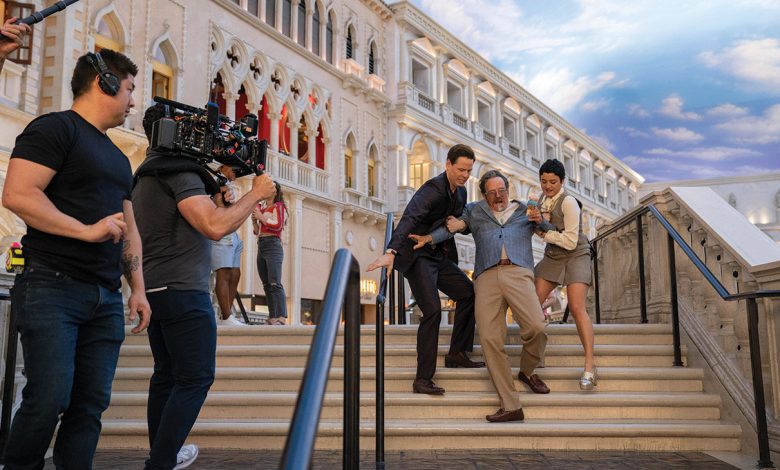
The stress on display in The Studio isn’t always artifice. Just off camera from the chaos of cringe into which Seth Rogen’s beleaguered film executive is thrown, the creative team undertook some borderline masochistic shoots — while juggling a circus of A-list cameos.
“The most pressure I felt was that we’d convinced all of these people to come on our show,” says Rogen, the Apple TV+ comedy’s star and co-creator. “Some of them we know very, very well. Some of them we didn’t know at all. I just wanted them to be happy with this experience.”
Adding to that pressure, most of the guest stars showed up to the first season of the Hollywood satire to play themselves under heightened circumstances. Zoë Kravitz overdosed on psychedelic mushrooms. A weeping Martin Scorsese collapsed into Steve Buscemi’s arms. Ron Howard being a dick. Netflix co-CEO Ted Sarandos even popped up at a urinal to reveal that his streamer’s talent are contractually obligated to thank him in their awards show speeches. (“If it were up to me, I’d get Apple to pay for a For Your Consideration campaign for Ted,” Rogen says of Sarandos’ well-reviewed performance. “Let’s have him take a nomination from one of his own shows.”)
Both a love letter to and a brutal sendup of Hollywood, The Studio follows Rogen’s Matt Remick as he fulfills his dream of becoming the head of fictional Continental Studios and then watches that dream deflate under the pressure to deliver consumer-friendly shlock. Griffin Mill, Continental’s CEO played by a bronzed and batshit-crazy Bryan Cranston, is particularly hot for a Kool-Aid movie. In the first season, Matt’s conundrum culminates in a trip to Las Vegas for CinemaCon, where the future of the company’s independence — Amazon is mulling a hostile acquisition — depends on a perfectly executed presentation of Continental’s slate to theater owners. Unfortunately, most of the staff and half of the talent are still high on the drugs they took the night before.
“That was the most insane 11 days of our lives,” says Evan Goldberg. The series’ co-creator, who directed all 10 episodes alongside serial collaborator and childhood friend Rogen, shot the two season-ending episodes — “CinemaCon” and “The Presentation” — at the same time. “We left The Venetian once, to get an exterior shot of Seth almost getting heat stroke in 110-degree weather. Besides that, it was casino, casino, casino …”
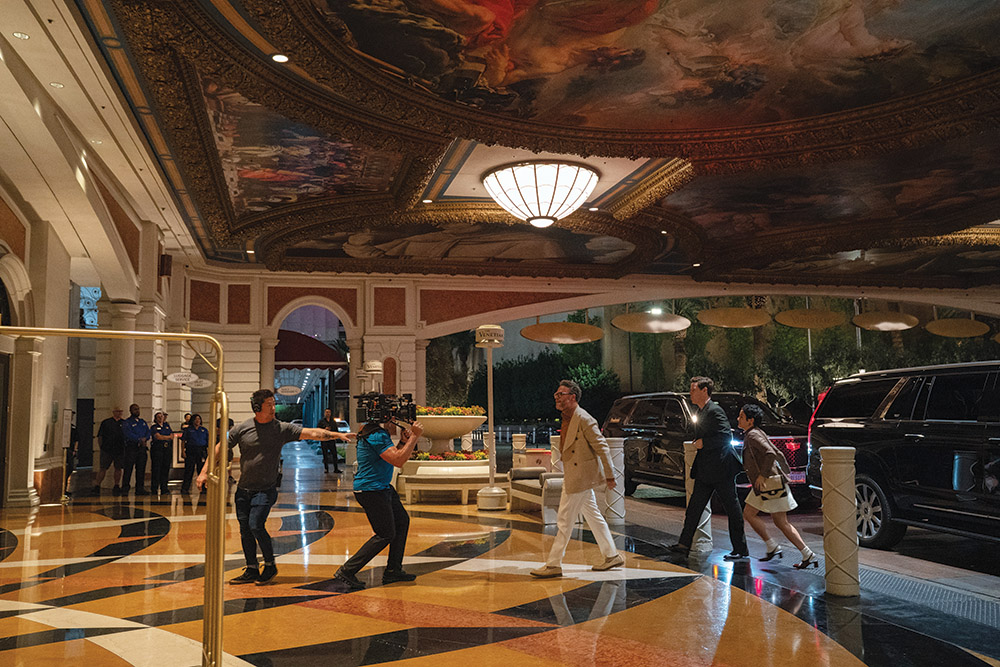
There was nearly no casino to use. Las Vegas hotels are famously picky about the types of projects they open their gilded doors to. A group of emissaries, including location manager Stacey Brashear, line producer Jesse Sternbaum and production designer Julie Berghoff, made the big pitch to the venue, which had one stipulation.
“We were really courting them and showing that they were going to be shown in a good light,” says Berghoff, “which is why we had to do the scene with Matt buying the drugs for the party before he went to Vegas.”
Rewatch the “CinemaCon” opener and you’ll see that drugs are done in Las Vegas but not acquired there. Matt’s mushroom purchase, care of Dave Franco’s dealer, was shot back in L.A. at the valet stand of Burbank’s Smoke House Restaurant.
“I try to never stand on principle,” says Rogen. “If there’s a request that’s easy to execute, even if philosophically insane, I will ignore the fact that it’s crazy and just do the note. That one was easy. Did they care that the characters are literally on drugs in the casino, running around, stealing the gondolas, getting incredibly high and rubbing nacho cheese on everything? Nope. We just couldn’t buy the drugs there.”
Before The Studio could deliver its debauched Sin City finale, the production first had to re-create Hollywood — albeit a slightly altered one that’s a bit more romantic, almost retro-futuristic. Continental Studios needed to look like a real film executive office building one might find tucked on a lot. And the various executives who populate it had to look like their real-life counterparts, though maybe not with the persistent, post-pandemic embrace of athleisure.
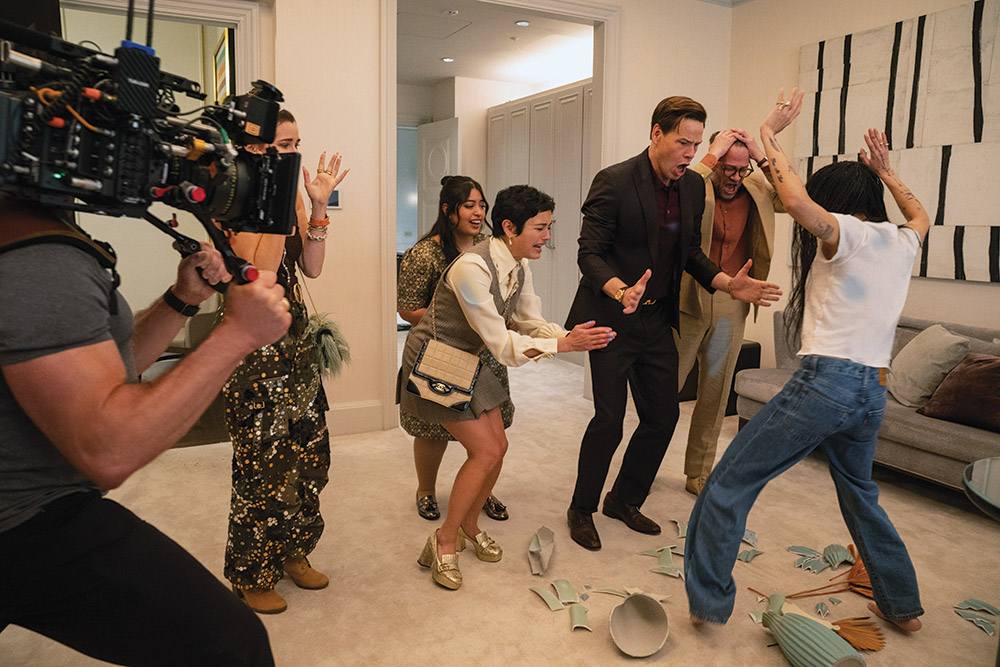
Ike Barinholtz’s Sal Saperstein, Continental’s vp production, dresses most like a contemporary studio executive. That is to say, he should probably add a few more suits into his rotation and definitely be introduced to a tailor. Chase Sui Wonders, whose Quinn Hackett has only just been promoted from the assistant desk, needed to look like she was trying to up her sartorial game. And for Matt, Rogen didn’t want him to repeat a single outfit. A character that consumed with presenting his wealth would never. Costume designer Kameron Lennox worked closely with the co-showrunner to develop an almost nostalgic aesthetic: relaxed cut, double-breasted suits with big lapels.
But none of the looks for the series regulars approaches Kathryn Hahn’s for over-the-top audacity. Over Zoom, Lennox read back one of her original emails to Goldberg and Rogen about her inspiration for Maya Mason, Continental’s flamboyant head of marketing: “This woman is obviously in her 40s or early 50s and not wearing age-appropriate clothing. … It’s her distorted version of what a hipster is. And she’s heavily influenced by Jennifer Lopez from when she was a Fly Girl.”
Hahn looks even more out of step when you drop her in The Studio’s primary set, Continental’s C-suite, or the numerous location shoots — all of which lean mid-century. “We wanted a monolithic temple-slash-tomb for the Continental office,” Berghoff says. “And it needed to be something that looked like it came from an architect from that golden era, so I looked to Frank Lloyd Wright and Philip Johnson. I grew up in Chicago, so they’re both very big influences on my life.”
Taking cues from Wright’s Imperial Hotel in Japan and the Marin County Civic Center in particular, Berghoff and her team fashioned both a facade and a sprawling interior for the two-story (read: expensive) building. The office also needed a glass wall facing out so that everyone could look in on Matt, augmenting the tension that instantly became The Studio’s calling card.
Matt’s mounting stress in every episode of The Studio is amplified by composer Antonio Sánchez’s percussive, jazzy soundtrack. “It’s just about finding the right instrumentation that will amp up the tension constantly,” says Sánchez, whose drum-heavy score to 2014’s Birdman was actually used as The Studio’s temp music before he even got the job.
The soundtrack’s anxiety-augmenting power is particularly effective on the “Golden Globes” episode, which anybody involved with the series will tell you was the most stressful to shoot.
“In general, we’re not the guys who are like, ‘It must be exactly like this or we will go crazy,’ ” says Goldberg. “But this was the one time in our lives where we really threw down. It had to be at the Beverly Hilton to capture the energy of what it feels like to be in that room. And if you’ve been in that room, I think we fucking nailed it.”
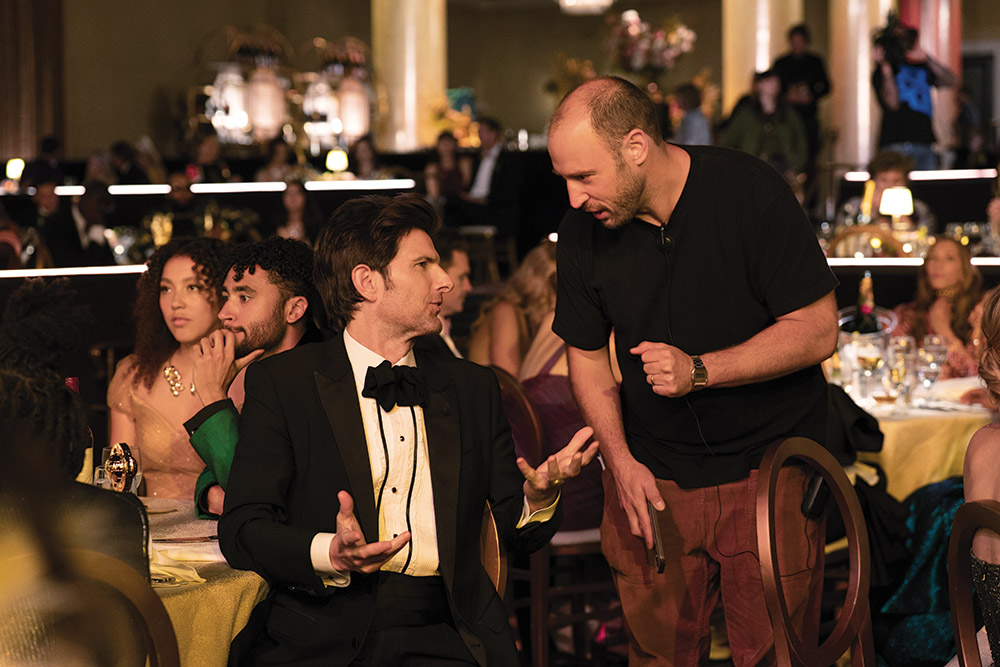
“The Golden Globes” finds Matt in another awkward predicament, fearing he won’t be thanked if Zoë Kravitz wins for a film he green-lit. Joining Kravitz in getting a crash course in the series’ frenetic shooting style in the episode were, to name just a few, Quinta Brunson, Adam Scott, Aaron Sorkin and Ramy Youssef, playing host of the fabricated Globes. The script by Alex Gregory, another co-creator alongside Peter Huyck and Frida Perez, plays up the politics of the seating chart — nominated for their film 50/50 in 2012, Golberg recalls being seated in the arctic fringes of the ballroom while Rogen got a premiere table by the stage — and makes sure every winning actor and writer thanks Sarandos in their speech.
“The corner we painted ourselves into, which was a good one, was that we wanted there to be no suspension of disbelief when it comes to the celebrities you’re seeing on the show,” says Rogen. “But it was a lot to wrangle. On day three, one of the background actors just turned to me and goes, ‘This sure seems like an expensive inside joke, Mr. Rogen.’ I hope other people find it funny as well, but, worst comes to worst, she was right. That is exactly what this is.”
But if it’s an inside joke, a lot of viewers appear to be in on it. On May 6, before the final three episodes of the freshman run dropped, the series was renewed for a second season. Among some ideas they say they’re considering for season two are THR’s Roundtables. One thing they’re sure of, however, is that they won’t have to be cold-calling for cameos — like they did with Olivia Wilde, Jean Smart and many others.
“Thank goodness, tons of people are asking to be in the show and do cameos,” says Goldberg. “That was one of the hardest parts of season one, so that’s an amazing shift. But people weren’t pitching us as many ideas as I’d expected. Now people are like, ‘Oh, this could go straight into the show.’ ”
Rogen agrees there’s been a shift now that the first season is out in the world. “I think when people were telling us stories, they didn’t think we’d actually use them,” he says. “Now they know that we actually will.”
“Please, everybody,” Goldberg interrupts. “We’d still love to hear your stories.”
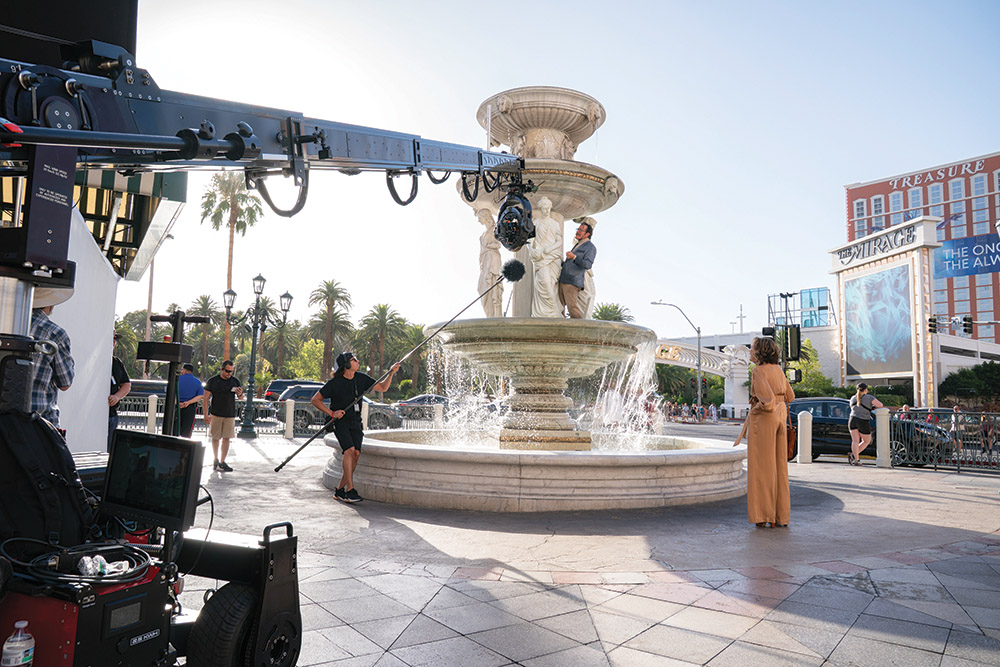
A version of this story appeared in the May 21 issue of The Hollywood Reporter magazine. Click here to subscribe.
Source: Hollywoodreporter
HiCelebNews online magazine publishes interesting content every day in the TV section of the entertainment category. Follow us to read the latest news.
Related Posts
- “Free Puff” T-Shirts Outside of Sean “Diddy” Combs Trial May Be Part of a Paid Protest
- Film AlUla: “Saudi Filmmakers Are Like the Crown Jewels for Us”
- 'Fuori'
Courtesy of Cannes
Share on Facebook
…
- Lady Gaga Is One Award Away from EGOT Status with Sports Emmy
- Chrisley Family Returning to TV in Lifetime Docuseries From ‘Surviving R. Kelly’ Team


